Huawei Ascend P7 Review in Malaysia
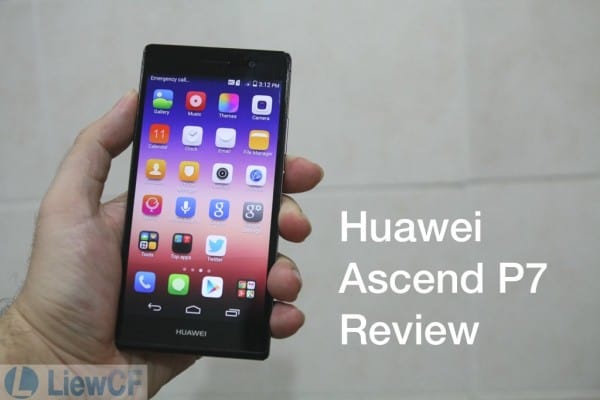
Huawei Ascend P7, launched in Malaysia in June 2014, is the company’s flagship smartphone in 2014. The world’s slimmest 4G LTE Android smartphone has unique 8MP front-facing camera, dual antenna, and some other interesting features.
Read on for my Ascend P7 review below to know more about the phone’s features, performance and camera photo samples.
Table of Contents
What’s in the box?
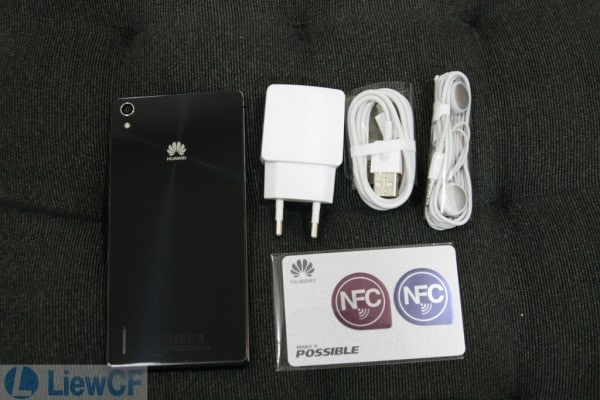
In the Huawei Ascend P7 white package box, you will find the smartphone, a charger, micro USB cable, headsets and two NFC stickers.
The NFC stickers allows you to quickly change phone settings with a tap. Example: turn on WiFi when you are home; silent phone when you are ready to bed.
Design
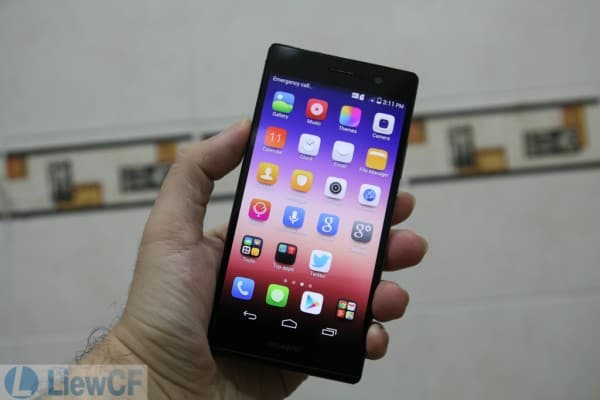
Huawei claims that Ascend P7 is the world’s slimmest 4G smartphone with 6.5mm thin. It is indeed slim and lightweight in hand.
Huawei Ascend P7 has square look with metal bumper and glass cover at the front and back. Glass covers may pick up oily smudges but easily wipe off with a cloth (hint: your shirt/pants). I prefer this than cheap plastic phone cover.
The phone has flat edges on every side, except the “waterdrop curve†bottom. The flat edges may not look less comfortable but actually not. Instead, the flat sides increase your grip to give a sense of secure, despite of the slim phone body.
I do not notice any benefit of using curved bottom. Maybe Huawei simply want to differentiate Ascend P7 from other similar shape smartphones, like Sony Xperia Z series?
Ascend P7 has no physical button on front, you only see a Huawei logo at the bottom. The front-facing 8MP camera has higher resolution than other smartphones, yet it looks the same with other smartphones’ front-facing cameras.
While the phone’s left side is blank, the opposite side is crowded by volume buttons, power button, MicroSD card slot and MicroSIM card slot.
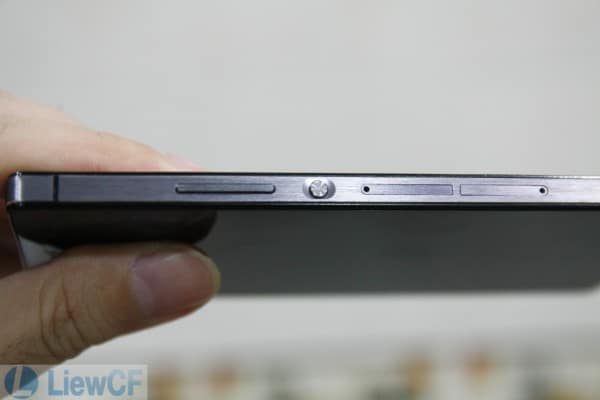
Power button is in the middle of right side for ease of access, but it is too close with the volume button. IÂ happened to press the wrong button couple times.
At the top is headphone jack and mic, another mic is next to middle microUSB port at the bottom. Dual mic is used to reduce background noise for clearer phone calls.
Ascend P7 back glass, according to Huawei, is made with “7-layer surface treatment using ‘spin effect’ micro-pattern designâ€. Frankly, I do not see anything significantly different than other smartphone with glass back cover. One thing for sure is that the back glass is tough because I dropped (accidentally, I swear!) it couple times but no crack or scratch.
The 13MP camera with metal ring is located at the top left corner of the back, with LED flash under it. At the bottom corner, you will see a small speaker grille.
Huawei Ascend P7 looks simple, clean and classy. I like the smartphone design.
Huawei Ascend P7 photo gallery
Display and Sound
Huawei Ascend P7, like other flagship smartphones in 2014, has Full HD 1920×1080 pixels fit in 5-inch display. The high DPI mobile display is crisp, bright, rich colours. The screen viewing angle is good too.
Though Ascend P7 equipped with large camera sensors (13MP & 8MP) but it has only a small speaker at the bottom back. Surprisingly, the small speaker has loud output volume. The sound quality is better than most smartphones’ mono speaker. No significant distortions at the max volume but a bit muddy.
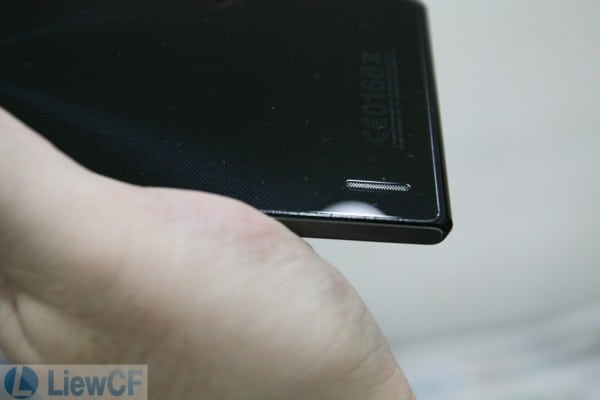
Due to the flat glass back design, the speaker output is blocked when you place it on a flat surface like a table. It is fine when you are holding it, as the sound wave will bounce toward you after hitting your palm.
Huawei Emotion UI and Apps
Ascend P7 is running Android 4.4.2 (KitKat) with Huawei’s Emotion UI 2.3. It features rounded corner app icons with shadow, you can arrange apps into folders.
Emotion UI does not have app drawer, all installed apps are sitting on home screen pages. It may looks familiar for iOS users but existing Android users would prefer cleaner home screen pages.
It has a time saving feature that you can shake the phone to automatically align app icons on home screen pages.
Emotion UI supports themes. It has 9 official themes for you but do not have theme store (yet?). The default “Balance†theme will automatically rotates a collection of beautiful wallpapers on lock screen.
On lock screen, you get 4 handy app shortcuts: calendar, calculator, torch, and mirror.
Mirror app is interesting and I think girls will like it. It is a simple app make use of Ascend P7’s 8MP high resolution front camera to mimic a mirror. You can pause the screen, switch to close-up shot with one touch. Perfect for checking pimples and blackheads on your cheeks.
Swype is the pre-installed keyboard input method. It is a good input method supporting multiple languages but Huawei does not include Chinese language for the keyboard. I also did not find Chinese language in the list of downloadable languages. This is weird because Huawei is a China company and the phone is also made in China.
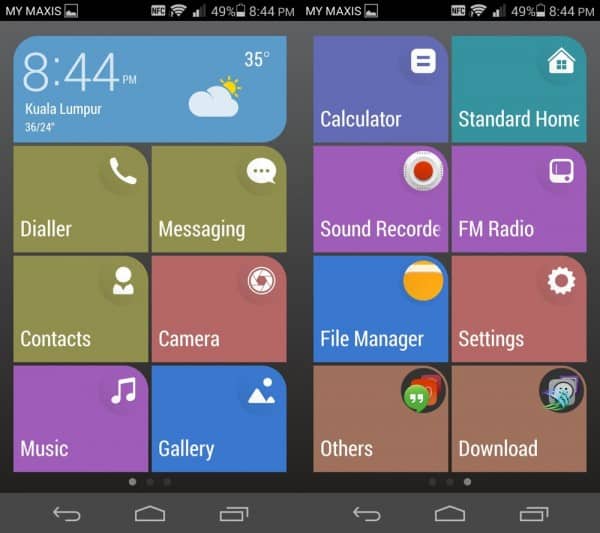
For elderly users, the many app icons on home screen could be confusing. Ascend P7 supports Standard and Simple home screen style. The latter has a simple layout and large icons.
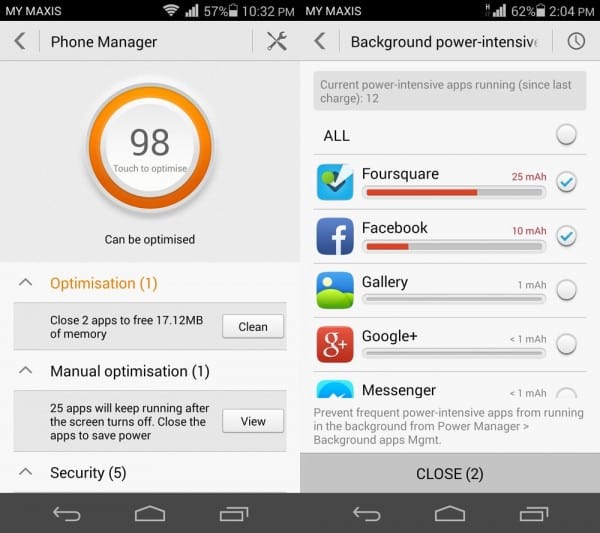
Phone Manager is powered by DU Speed Booster (Google Play link), a popular Android optimizer and cleaner app. It optimizes your phone by closing apps and cleaning junk files to free up memory and storage space. In manual optimisation, you can close apps that keep running after the screen is turned off to save power.
Suspend button is a on-screen virtual button stick to the screen edge. Tap it to open quick menu: back, home, small apps (music, message, note, calculator, calendar), lock screen, clean up memory.
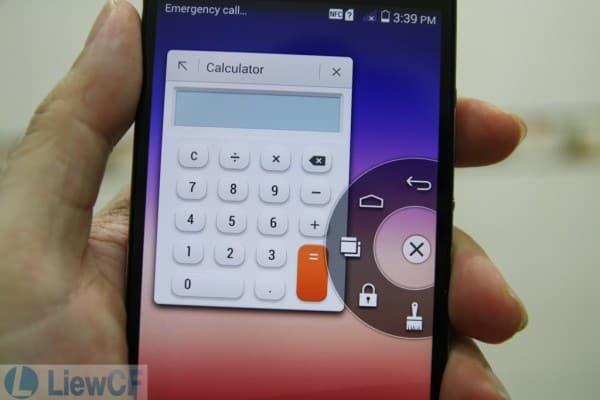
Camera
Standing out among other smartphones, Huawei Ascend P7 equipped with a 13MP F2.0 main camera and a 8MP front camera. 8MP is the highest resolution for smartphone’s front camera I ever try.
You can take a quick snapshot while phone screen is still off by double pressing the lower volume button. The fastest time is 1.2 second, or less than 2 seconds. You will see the camera launch time after taking the snapshot.
Quickly launch Camera app and capture first photo in less than 2 seconds may sounds useful but the result photo is often blurry and out of focus. I only use the camera shortcut to take a quick picture of parking lot number to remember where I park my car.

The Camera app is simple to use, it does not have scene modes but camera filters. It can take pictures automatically using Audio Control when it detects a voice reaches preset decibel level. Meaning, you can shout any word to fire the shutter. This wikipedia ‘say cheese’ page will gives you some ideas.
Watermark mode allows you to add 1 out of 10 predefined watermark images to your photo. You can customise watermark text and location. Too bad, you cannot add your own image (company logo) as watermark.
The Camera app has a Beauty mode with 10 level auto-facial enhancements for you to take more beautiful photos of persons. Don’t overuse it. Level 10 will result very fake portrait photo. I think Level 3 is good enough.
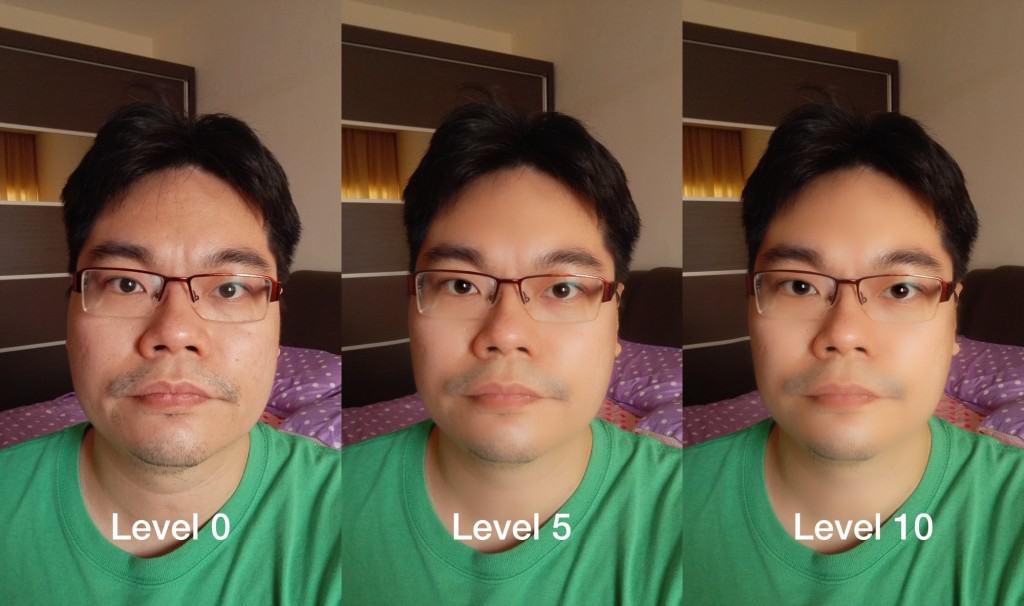
Want to take group selfie? Ascend P7 is the first smartphone to enable you take a panorama selfie (“grouphieâ€, “wefieâ€) with 8MP front-facing camera. It will take and merge 3 photos into a single 1952×1274 (2.5MP) photo. The panorama selfie has a fisheye effect where center objects will look larger. Make sure you are not standing in the center, should you mind about your head size in the photo.
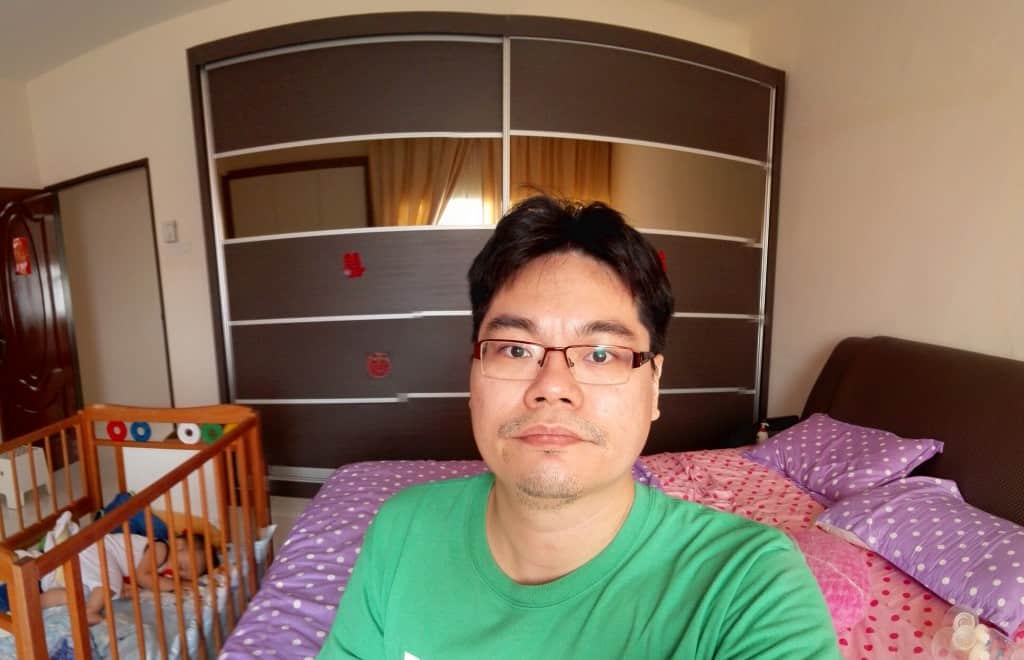
Both 13MP and 8MP cameras take good photos in good lighting but have some issues under low light environment. Photos I took using front-facing camera in room with curtain down (low light) are reddish. Indoor photos taken by rear camera have high noise level.
Huawei Ascend P7 photo samples
Here are some photos taken by Huawei Ascend P7 front- and back-facing cameras, click thumbnail image for original big file size.
Performance
Unlike other smartphones which powered by 3rd party mobile processor, Huawei Ascend P7 uses their own in-house 1.8GHz HiSilicon Kirin 910 quad-core CPU, paired with 2GB RAM and 16GB internal memory, support microSD memory card up to 64GB.
Ascend P7 performance is above average but not the top line. It is good enough to be my primary phone for everyday usage. Opening and switching apps have small delay, which you may not notice until you used a top performance Android phone.
Huawei Ascend P7 benchmark results (AnTuTu & Quadrant)
Based on the benchmark results, Huawei Ascend P7 performance is above Samsung Galaxy S3 but lower than S4.
- AnTuTu Benchmark: 25397
- Quadrant: 6988
- Vellamo Metal: 911
- Vellamo Multicore (beta): 1314
- Vellamo Browser (Chrome): 1861
- Futuremark 3DMark (Ice Storm Unlimited): 7650
- Futuremark 3DMark (Ice Storm Extreme): 5094
Dual Antennas
Huawei claims that Ascend P7’s dual antenna design can improve signal receptions and stabilized connection even during weak signal reception to minimize battery drain.
In my unscientific tests, Ascend P7’s WiFi connection performance is better and mobile network speed on highway is faster, when comparing with other smartphones.
But, I noticed that Ascend P7 will switch to offline mode (no mobile network connection) when mobile signal is weak and unstable. Perhaps it helps to save battery juice by not searching for network during weak signal reception.
Personally, I prefer my phone to stay connected all the time even only weak signal is available. I don’t mind to charge it with a power bank later.
Battery life
Huawei Ascend P7 uses a 2,500 mAh lithium polymer battery and supports advanced power-saving mode. It last for 13 hours for my normal usage. Glad that it is another smartphone last for a whole day.
In my battery drain test, playing 1 hour full screen video will drained 20% of the phone’s battery. Meaning, a fully charged Ascend P7 can play video continuously up to 5 hours.
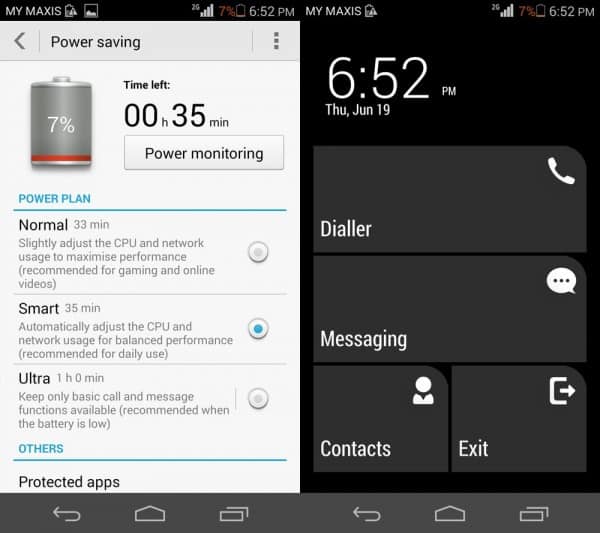
Ultra power saving plan can almost double battery life (35 mins to 60 mins) but only basic call and message functions available.
Huawei Ascend P7 specs
- 5.0 inch touch screen, Full HD 1920×1080 resolution
- 1.8GHz HiSilicon Kirin 910 quad-core CPU
- 2GB RAM
- 16GB internal memory (support microSD 64GB)
- Android 4.4.2 (Huawei emotion UI 2.3)
- 13MP F2.0 rear camera with flash, 8MP front camera
- 4G LTE, WiFi 802.11b/g/n
- 124g weight
- 2500 mAh battery
- Price: RM 1,499
Conclusion
Many girls would love the camera features designed for them, such as beauty mode, group selfie, mirror app. Even if taking photos is not your thing, Huawei Ascend P7 is still a good smartphone choice.
The design is nice, battery life is good, and phone management for advance users. The phone switching to offline mode on poor signal is a bit annoying. The CPU performance is a bit lacking but I am willing to use it everyday.
I would like to thank Huawei Malaysia for the opportunity to review Huawei Ascend P7. This is a free product review with honest write-up. Interesting to submit your products for review? Get in touch with me.

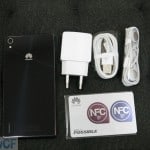
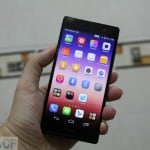
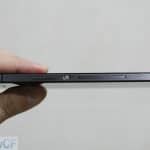
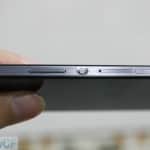
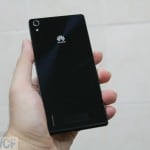
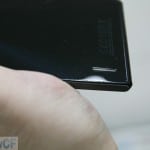
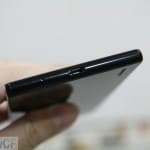
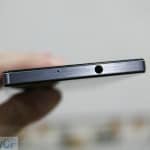

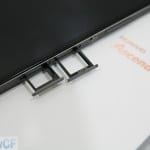







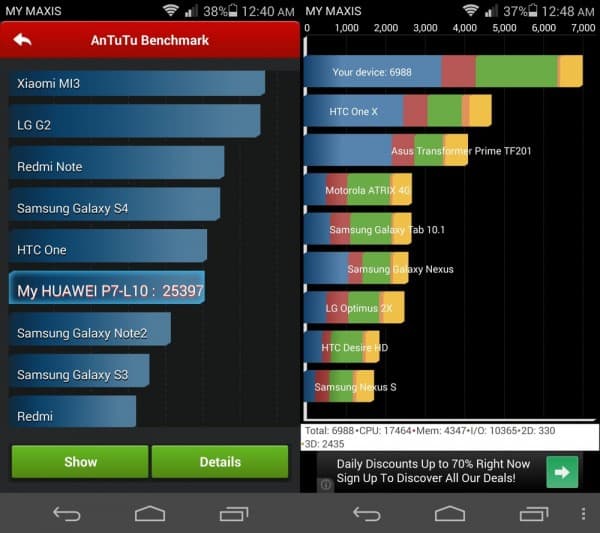
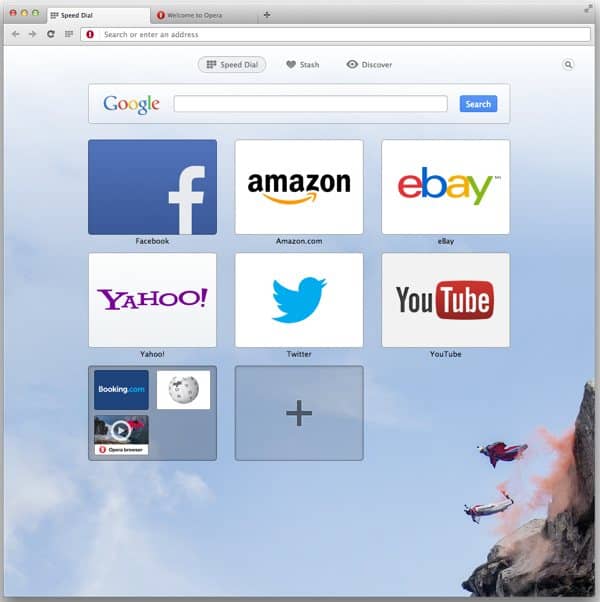
![Giveaway: 20x Colour iPhone Cables (Red, Blue, Green, Pink) [ENDED]](https://old.liewcf.com/wp-content/uploads/LiewCF-giveaway-colour-iPhone-cables.jpg)
